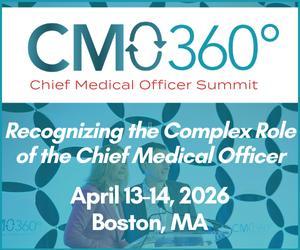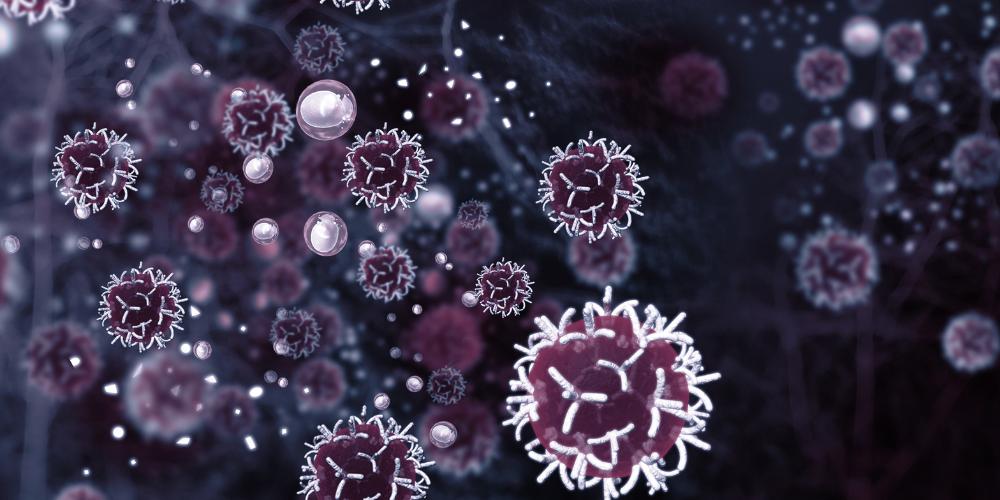New Approaches to Treat Brain Cancers Out of City of Hope
Christine Brown, PhD, speaks to some of the exciting progress to treat glioblastoma with allogeneic approaches from City of Hope. Dr Brown is the Heritage Provider Network Professor in Immunotherapy at City of Hope Comprehensive Cancer Center and the Deputy Director of the T Cell Therapeutics Research Laboratory at City of Hope.

Can you speak about your ongoing CAR-T cell therapy clinical trials?
It’s an exciting time at City of Hope and in the field of CAR-T cell therapy for both primary brain tumors and tumors that metastasize to the brain. These are very difficult to treat tumors. Most other therapies fail. There is a huge opportunity to improve outcomes for patients using cell-based therapies. Oftentimes when I give presentations, I start off by showing that CD-19 CARs can traffic to the brain and eliminate leukemia and lymphoma in the CNS. That was a surprise to all of us but it gave hope that this type of therapy can make a significant impact in these really difficult cancers.
I think City of Hope has more trials treating malignant brain tumors than any other institution at this point. We’re running seven clinical trials. Six of those are in primary brain tumors, either pediatric brain tumors or glioblastoma (GBM) or grade III gliomas. One is for HER2 malignancies that have metastasized to the brain. My laboratory is focused on accelerating learnings from the bench through City of Hope’s translational infrastructure to the clinic and to patients as quickly as possible. We have been doing that in many exciting ways since we started this program.
We have been looking at optimizing the route of CAR-T cell delivery for patients based on my preclinical research. We are also evaluating combination therapies and new CARs. We now have trials testing CARs that recognize three different antigens: IL-13 receptor alpha 2, HER2 and a chlorotoxin-directed CAR. We are also looking at different agents that modify the tumor microenvironment. We are combining CAR-T cells with checkpoint inhibition. We’re looking at CAR-T cell therapy with and without lymphodepletion.
"If you can crack the nut of curing GBM, you have a good likelihood of helping patients with any type of malignant brain tumor."
What are some of those recent learnings from the bench that you’re translating to the clinic?
One important learning goes back to a New England Journal of Medicine publication from 2016. We had a patient with multifocal GBM. At that same time, my research laboratory was investigating different routes of administering CAR-T cells and how best to address the challenge of multifocal tumors. In mice, we were implanting tumors on each hemisphere of the brain and looking to see which delivery routes were most effective. We found that if we delivered these cells to the cerebrospinal fluid (CSF) we got better trafficking to multifocal tumors.
When one of our patients seemed to have a local response but his tumors far from the injection site progressed, we were able to meet with the clinical and research teams and show that the data in mice suggested the utility of delivering these cells in the CSF, which no other group was doing. We went to the FDA and asked for permission to administer CAR T cells into the CSF in that patient and this individual had a dramatic clinical response where all of his lesions regressed and the therapy mediated a complete response in that setting.
Now there have been publications from other groups looking at other types of brain tumors and they are finding that administering CAR T cells into the CSF has clinical advantages. Many institutions are now using this route of delivery for their clinical trials. That is one example where we pivoted for a specific patient based on learnings from the research bench.
“We now need to scale-up the process and make this GMP compatible so it can be administered to patients."
What are some of the challenges with taking an allogeneic approach for brain cancer?
We’re really excited about moving toward an allogeneic approach for brain tumors. These patients can’t wait. Median overall survival at first diagnosis is just a little over a year and a half. Once those tumors recur, which is the setting we’re treating at, it’s six months. Waiting 3-4 weeks for your autologous therapeutic product to be manufactured is a critical time for these patients. Off-the-shelf therapies will be important for all cancer types but will have a real opportunity for brain tumors. Also, the brain is an immunospecialized organ and so you might potentially have a greater therapeutic window before the allogeneic cells are rejected. Quite a while ago, City of Hope was one of the first institutions to evaluate an off-the-shelf approach for CAR-T cells in collaboration with Sangamo Biosciences.
The iPSC platform gives us a new opportunity. We have really encouraging and exciting preclinical data for our ability to differentiate these iPSCs into a T-cell lineage but we now need to scale-up the process and make this GMP compatible so it can be administered to patients. There are some unique aspects to the cell product. Our publication will show that these cells look very T-cell-like. They have a conventional T-cell phenotype but the majority of cells are more CD8 in the product versus CD4. We’re trying to use that to our advantage to build out a potent therapy and combination therapies that will be geared to promoting the therapeutic activity of a CD8 CAR product.
What are the biggest challenges to have a meaningful clinical impact on brain tumors?
The first is how to get the cells there. That is a huge challenge in brain tumors because these are regional cancers protected by the blood-brain barrier. How do you get these cells to infiltrate and penetrate these tumors? A lot of our work has been focused on that question and we have started out by focusing on optimizing the route of delivery to address this challenge. We are now looking at other ways to promote trafficking of the cells and creating an environment in the tumor to better recruit these immune cells. That’s true of all solid tumors but brain tumors represent a unique challenge because of its location.
The second key challenge for solid tumors is figuring out how to safely target without compromising or targeting normal tissue. At City of Hope, we are evaluating three novel CARs for GBM and hoping to build out trials combining them to have a multitargeted approach to address the challenge of heterogeneity. You want specificity but also broad targeting. A year ago we published in Science Translational Medicine a novel CAR using the chlorotoxin peptide, and are now looking to evaluate the utility of this CAR in the clinic and whether it will be tolerated by patients and if it will broadly target tumors as our preclinical data has suggested.
Lastly is the tumor microenvironment. How do you co-opt the microenvironment to become more antitumor? Our publication that is coming out and is online shows how CAR-T cells not only kill the tumor but through production of inflammatory cytokines like IFNgamma can reshape the tumor microenvironment and actually promote endogenous immunological memory. That is really exciting because it shows that the CAR-T cells can kill and, under the right conditions, stimulate a host immune response. I think that the engagement of endogenous immune cells will be critical as we try to develop therapies that are highly effective against solid tumors. There is evidence that CAR-T cells can convert a tumor from “cold” to “hot” and recruit in more immune cells.
What will the next generation of therapies for GBM or brain tumor in general look like?
Most of our trials are focused on GBM. If you can crack the nut of curing GBM, you have a good likelihood of helping patients with any type of malignant brain tumor. Most of my studies and research has focused on GBM as the model for malignant brain tumors. It’s the most common and it’s an intractable tumor with few efficacious therapies.
The next generation of therapy will be a multipronged approach that targets tumors in a way that engages the host immune system. We hope these therapeutic cells will act as micro-scalpels that are able to go throughout the brain parenchyma and other areas and eliminate these sites of malignant disease. It’s not going to be easy. We spoke about the challenges. But I am optimistic. I think that there are a lot of exciting innovations going on in the field and bringing together other fields to make a meaningful impact for this patient population and other solid tumors.
To hear Dr Brown speak about advancements in CAR T for the treatment of glioblastoma, click here.
For more information on IO360º Summit, click here.









